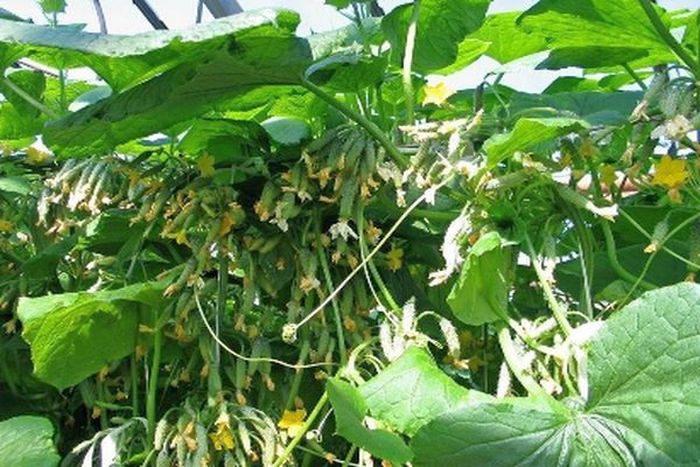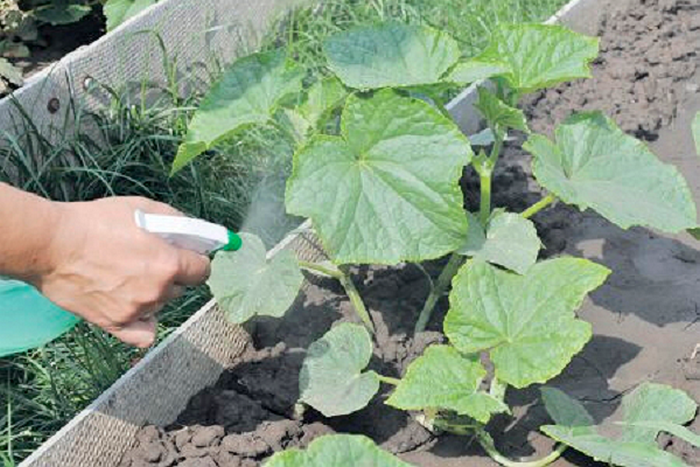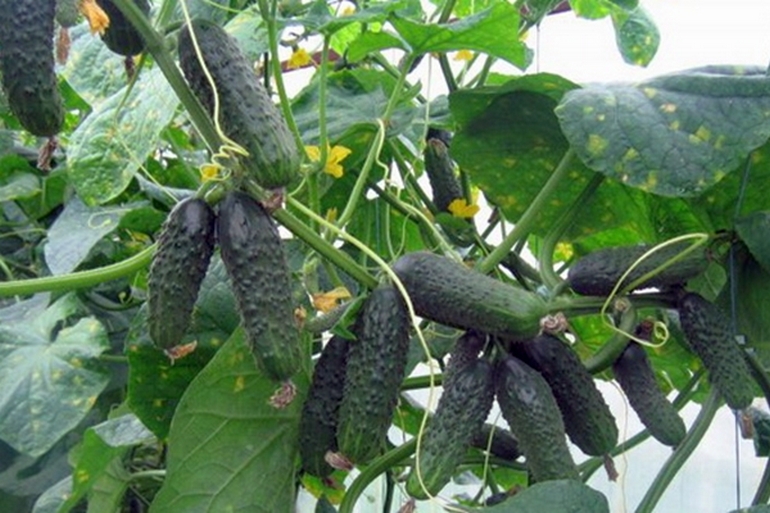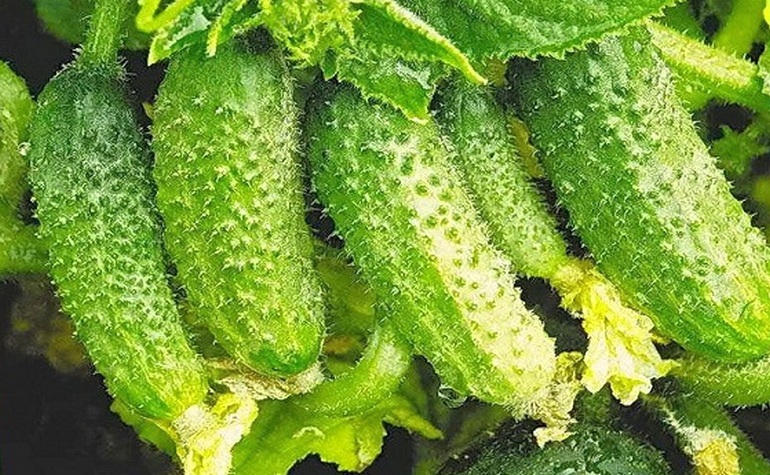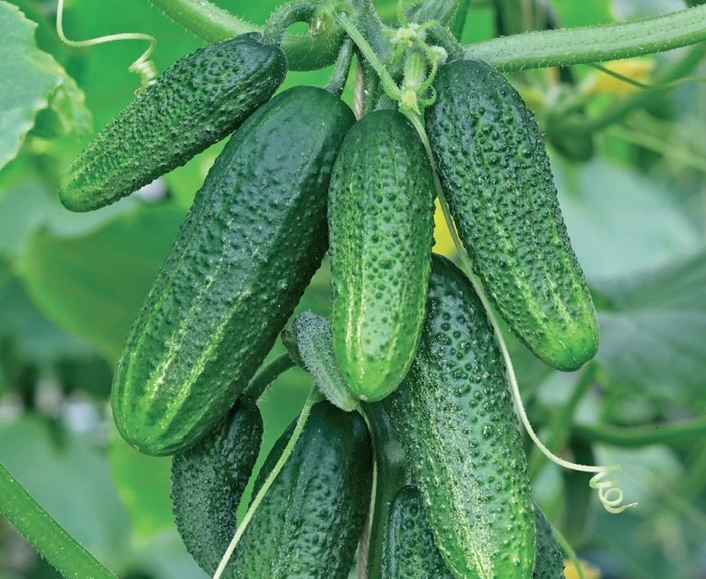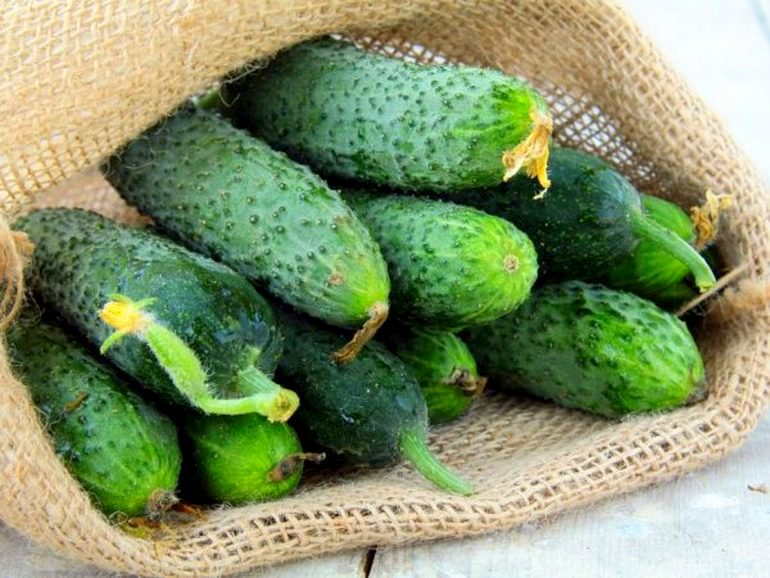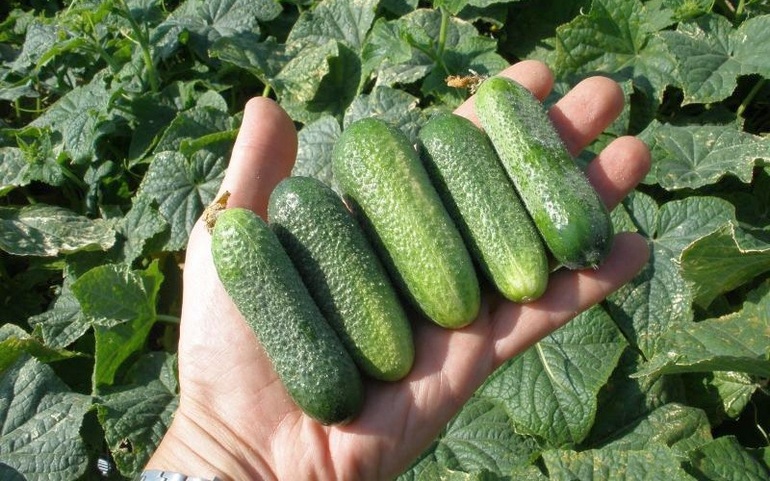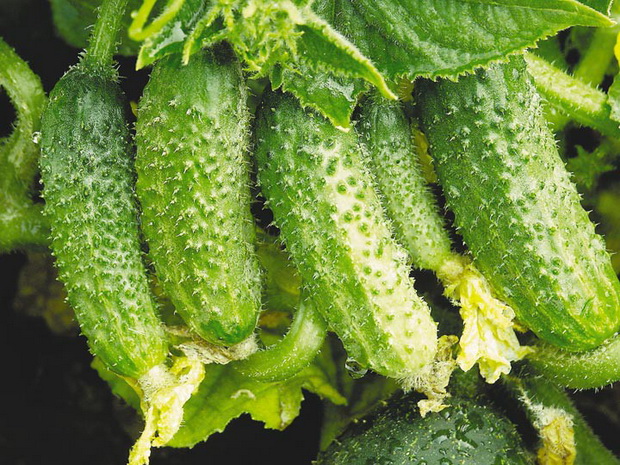Content:
Cucumber Maryina Roscha is a hybrid f1, the result of crossing two different varieties of cucumbers. Crops undergo this process for better productivity and increased resistance to disease. This hybrid staunchly resists cold snaps, develops well in the shade and gives a bountiful harvest until late autumn. It is impossible to collect seed from hybrids for further cultivation, therefore their seeds are more expensive on the market than varietal cucumbers.
Description of the hybrid
Maryina Roscha is a parthenocarpic variety, that is, it does not need the help of insects for pollination. Therefore, the variety is grown both in open areas and in closed areas (greenhouses, hotbeds) without access to insects. When grown in greenhouses, the vertical method is usually used - they let the whips along the trellis or tie them to the crossbar.
The variety is early maturing and high-yielding. It takes about 40 days from germination of seeds to obtaining the first fruit. Harvest from a square of plantings with proper agricultural technology reaches 12 kg. The hybrid is characterized by bundle formation of ovaries - from 2 to 8 fruits are formed in one sinus.
Fetal characteristics
The vegetable is oblong, cylindrical in shape. The surface is uneven, bumpy, with a moderate number of white spines. The color of the fruits is bright green, yellow stripes are visible at the tip, not reaching the middle. The weight of one cucumber is 110 g. In length they reach 10-12 centimeters. The pulp is crispy and firm. In cooking, it is used fresh and pickled. The taste is sweet-cucumber, pronounced cucumber aroma. There is no bitterness. Perfect for all kinds of workpieces.
The variety is well resistant to the cucumber mosaic virus, olive spot, and has a tolerance to downy mildew and common powdery mildew.
Agricultural technology of cultivation
Like many varieties of cucumber hybrids, Maryina Roscha is sown by seedling or seed method. When sowing seeds for seedlings, garden soil mixed with peat is chosen. The method of planting seedlings in peat pots is popular. The seedlings grown in this way are transplanted into the ground together with the container, the root system is not damaged.
Sowing begins in April-May, harvesting begins in June and ends in August. Seeds are planted in open ground from mid-May, when the threat of frost has passed. After germination of seeds or transplanting seedlings, it is necessary to provide comprehensive planting care, which consists in:
- weeding;
- watering;
- loosening the soil;
- dressing;
- garter;
- fight against diseases;
- harvesting.
If you follow the agrotechnology of growing this variety, a bountiful harvest of delicious and aromatic cucumbers will not keep you waiting.
Pros and cons of the variety
The positive characteristics of this hybrid include:
- high productivity;
- excellent taste;
- transportability;
- duration of fruiting;
- resistance to dangerous diseases;
- keeping quality;
- versatility in the use of fruits.
There are much fewer negative qualities:
- in the absence of watering, the tip of the cucumber can still taste bitter;
- the hybrid, when collecting seed, may not produce fruits in the next agronomic year.
In the market, hybrids are more expensive than varietal seed. But this does not prevent gardeners from growing delicious cucumbers and leaving positive reviews.

